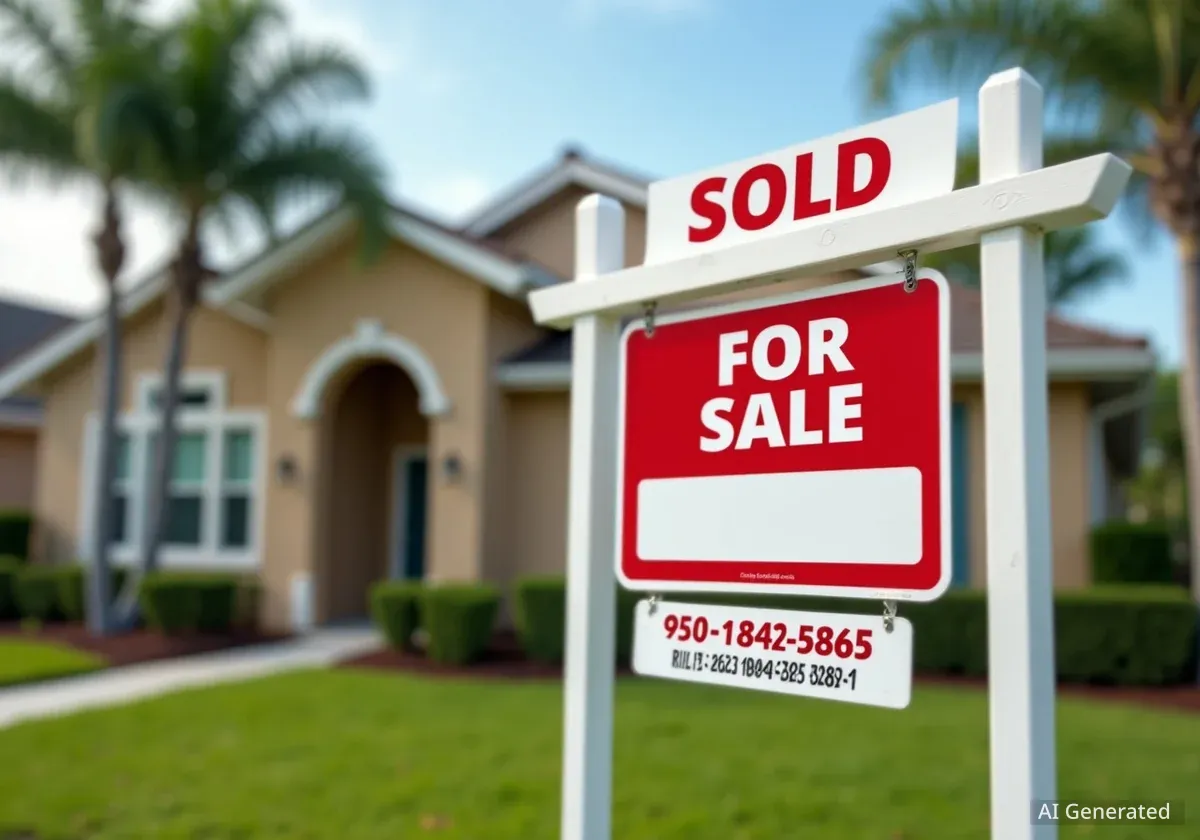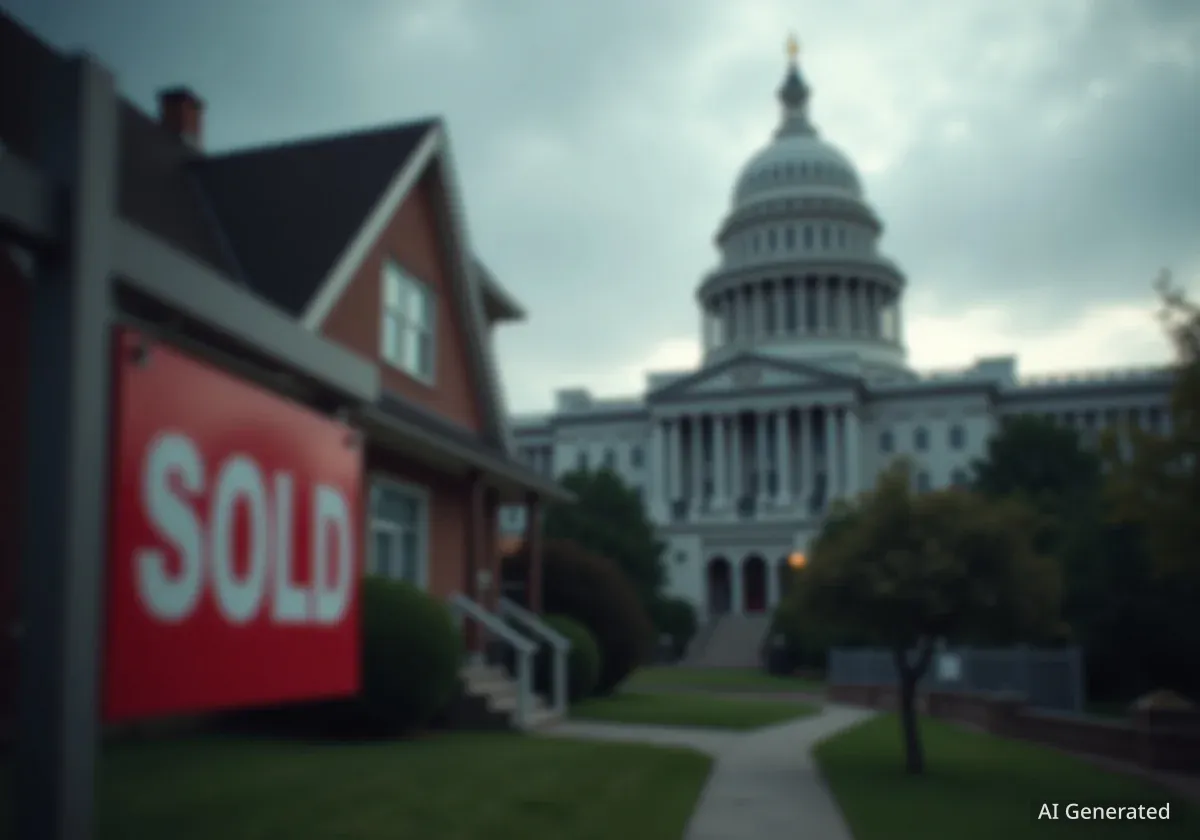Homebuyers and homeowners are closely watching mortgage rates, which have settled in the low 6% range as of mid-September 2025. Following a period of volatility, the average 30-year fixed-rate mortgage now stands at approximately 6.26%, offering some relief from the higher rates seen earlier in the year.
Looking ahead, a consensus among leading financial institutions suggests a period of relative stability with a slight downward trend. Most analysts project that mortgage rates will average between 6.1% and 6.5% over the next 12 months, concluding in September 2026. This forecast is heavily dependent on the Federal Reserve's monetary policy, inflation trends, and the overall health of the U.S. economy.
Key Takeaways
- Current Rate Stability: As of mid-September 2025, the average 30-year fixed mortgage rate is approximately 6.2% to 6.3%.
- 12-Month Forecast: Experts predict rates will average between 6.1% and 6.5% through September 2026.
- Economic Drivers: The Federal Reserve's interest rate decisions, inflation data, and job market performance are the primary factors influencing mortgage rates.
- Impact on Buyers: A gradual decline in rates could improve affordability and potentially increase home sales by 3% to 14% in the coming year.
The Current Mortgage Rate Landscape
The journey to the current mortgage rates has been turbulent. After reaching historic lows near 3% in 2021, rates climbed aggressively as the Federal Reserve moved to combat rising inflation. This sharp increase pushed the average 30-year fixed rate to a peak of over 8% in 2023, the highest level seen in over two decades.
This dramatic shift significantly impacted the housing market, sidelining many potential buyers and slowing transaction volumes. However, conditions have started to normalize. Throughout 2024, rates averaged around 6.90%, and by mid-2025, they had eased further.
A key event influencing this recent decline was the Federal Reserve's decision in September 2025 to cut its benchmark interest rate by a quarter-point (0.25%). This move was a response to signs of a cooling labor market, providing a signal that the central bank was shifting its focus slightly toward supporting economic activity.
A Look Back at Average Mortgage Rates
Understanding the recent past provides context for future predictions. The average 30-year fixed mortgage rate has fluctuated significantly over the last five years.
- 2020: 3.38%
- 2021: 3.15%
- 2022: 5.53%
- 2023: 7.00%
- 2024: 6.90%
Source: Historical market data.
Key Economic Forces Shaping Rates
Mortgage rates are not set in a vacuum. They are the result of a complex interplay of economic indicators and policy decisions. Several key factors will determine the direction of rates over the next year.
The Federal Reserve's Monetary Policy
The Federal Reserve's federal funds rate is the most powerful driver of borrowing costs across the economy. When the Fed raises this rate, mortgage rates tend to follow. The recent 0.25% cut has already influenced the market, and analysts widely expect one or two additional small cuts in late 2025 if economic conditions warrant them.
Inflation and Consumer Prices
Inflation remains the central bank's primary concern. The goal is to bring inflation down to a sustainable 2% target. Current forecasts suggest inflation will hover around 3.3% in the near term. If inflation remains under control or continues to fall, it creates room for the Fed to lower rates. However, an unexpected surge in prices would force the Fed to hold rates steady or even consider increases, which would push mortgage rates higher.
The 10-Year Treasury Yield
The yield on the 10-year U.S. Treasury note is a crucial benchmark for 30-year fixed mortgage rates. Lenders often price their mortgage products based on this yield. Currently, the 10-year Treasury is trading in the 4.1% to 4.5% range. The 'spread' between this yield and the final mortgage rate is also important for consumers to watch.
Job Market and Economic Growth
The strength of the U.S. economy, particularly the labor market, heavily influences the Fed's decisions. Recent data showing weaker job growth, such as the 54,000 jobs added in August 2025, can encourage rate cuts. Conversely, unexpectedly strong economic growth or job creation could delay further cuts, as it might signal persistent inflationary pressures.
Expert Forecasts for 2026
Major housing and financial organizations have released their projections for where mortgage rates are headed. While they differ slightly, a clear consensus points toward gradual easing.
"Most forecasts converge on the idea that mortgage rates will likely settle in the mid-6% range for the majority of 2026, with a possibility of dipping lower if the economy weakens more than anticipated."
Here is a summary of predictions from several key institutions:
- Fannie Mae: Projects rates will end 2025 at 6.5% and fall to 6.1% by the end of 2026.
- Mortgage Bankers Association (MBA): Forecasts a rate of 6.7% at the close of 2025, easing to 6.4% by year-end 2026.
- National Association of Realtors (NAR): Sees rates at 6.7% by the end of 2025, with an average of 6.0% for 2026.
- National Association of Home Builders (NAHB): Predicts a rate of 6.6% to finish 2025, averaging 6.32% in 2026.
These projections suggest that while a return to the ultra-low rates of 2021 is not on the horizon, borrowers can expect a more stable and slightly more favorable lending environment.
What This Means for Homebuyers and Owners
The forecasted rate environment has direct implications for anyone looking to buy a home or refinance an existing mortgage.
For Prospective Buyers
A modest decline in rates can significantly impact affordability. For example, a 0.5% reduction on a $400,000 mortgage can lower the monthly payment by approximately $150. This increased purchasing power could stimulate the market, with some analysts predicting a 3% to 14% increase in home sales in 2026. However, home prices are still expected to appreciate by 1% to 4% annually, meaning the overall cost of ownership will likely continue to rise, albeit at a slower pace.
For Current Homeowners
Homeowners with mortgages above 7% should monitor rates closely for refinancing opportunities. According to some reports, millions of homeowners could benefit financially from refinancing if the national average rate drops to around 6.125%. Refinancing can lower monthly payments, reduce the total interest paid over the life of the loan, or allow homeowners to tap into their home's equity.
Potential Risks and Future Outlook
While the consensus points toward lower rates, economic forecasting is inherently uncertain. There are both optimistic and pessimistic scenarios that could unfold.
An optimistic scenario would involve inflation falling faster than expected, prompting the Federal Reserve to implement deeper and quicker rate cuts. In this case, mortgage rates could potentially fall below 6%, perhaps reaching as low as 5.875%, which would provide a substantial boost to housing demand.
Conversely, a pessimistic scenario could see inflation re-accelerate due to new supply chain disruptions or a surge in consumer spending. This would force the Fed to pause its rate cuts or even reverse course, sending mortgage rates back toward the 7% mark and potentially freezing housing market activity once again.
Long-term, many economists believe a sustainable, normalized mortgage rate for a healthy economy is around 6%. Therefore, even if rates dip into the high 5s, they may not remain there indefinitely. Preparing your personal finances—by improving your credit score, saving for a larger down payment, and comparing offers from multiple lenders—remains the most effective strategy for securing the best possible rate in any market condition.





